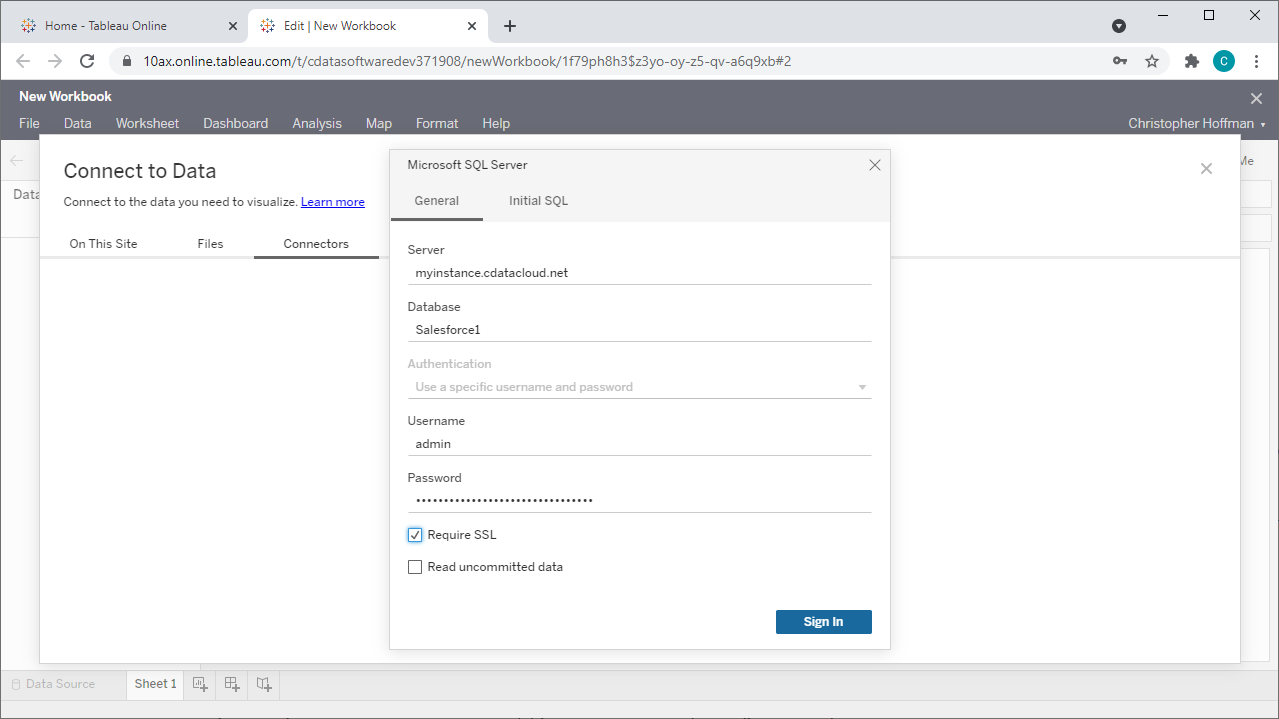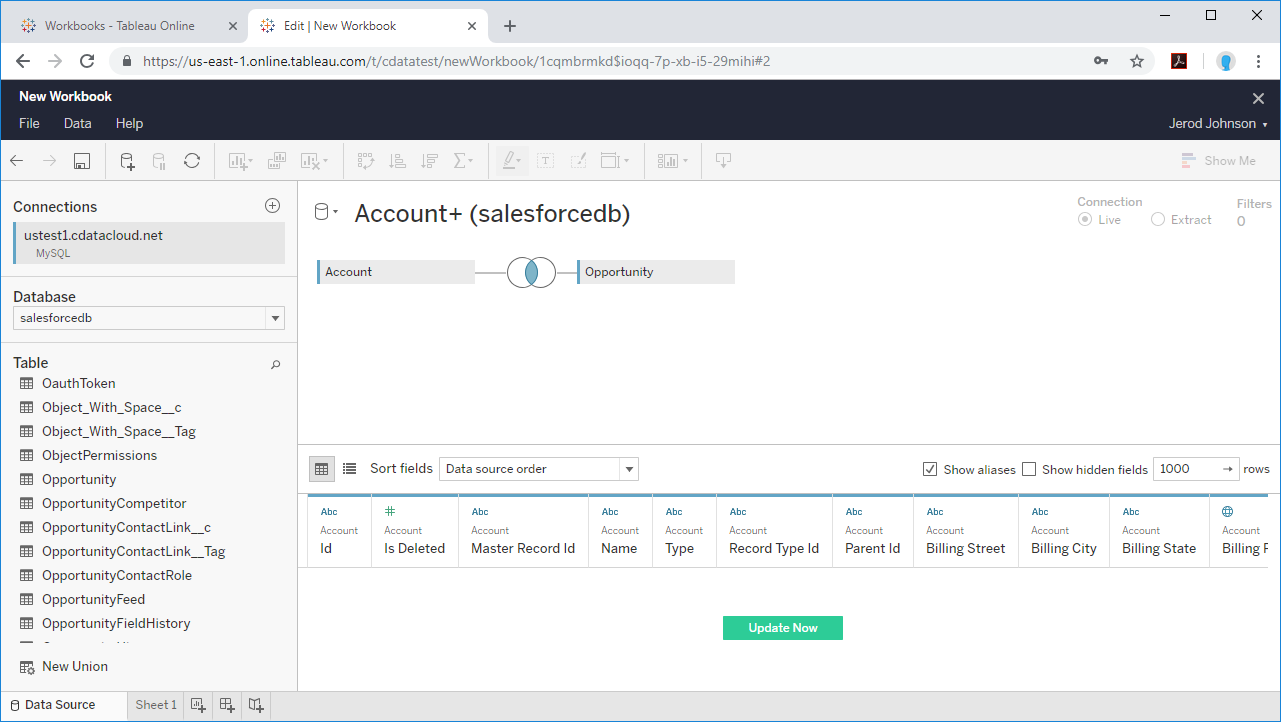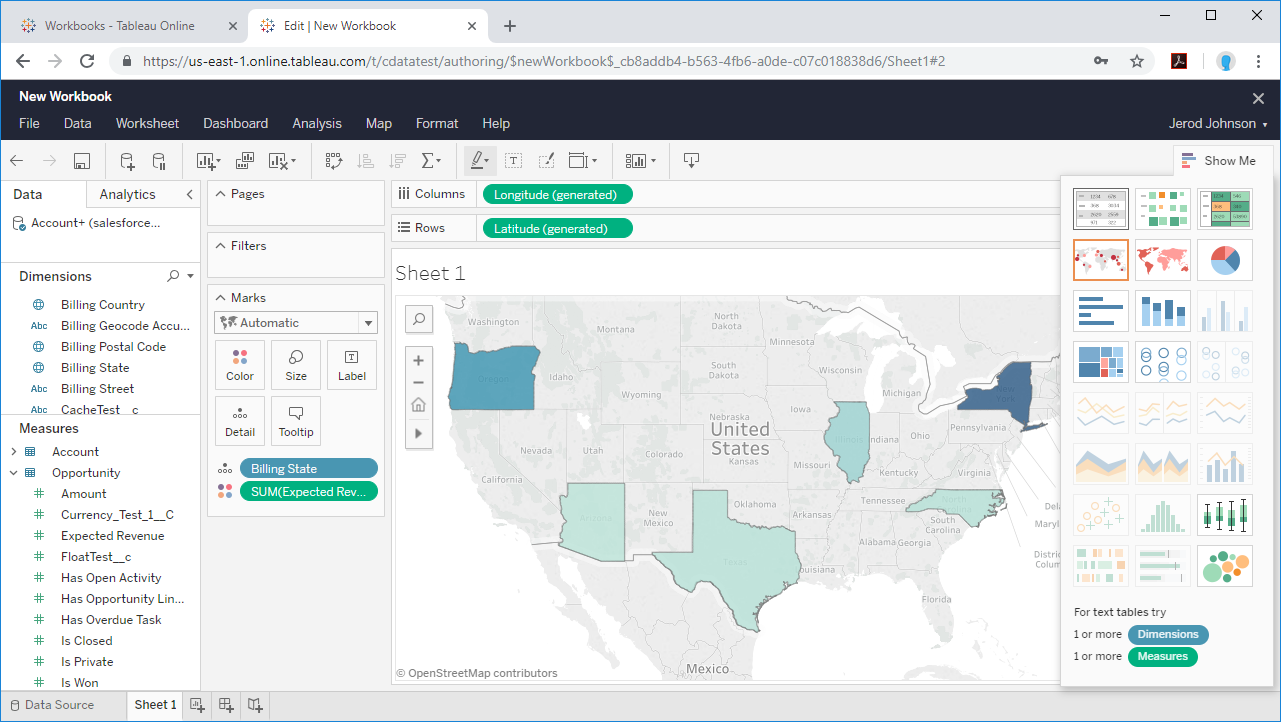Discover how a bimodal integration strategy can address the major data management challenges facing your organization today.
Get the Report →Build Sage US Visualizations in Tableau Cloud
Use CData Connect Server to create a virtual SQL Server Database for Sage US data and build visualizations in Tableau Cloud.
Tableau Cloud is an analytics platform fully hosted in the cloud. When paired with CData Connect Server, you get instant, cloud-to-cloud access to Sage US data for visualizations, dashboards, and more. This article shows how to create a virtual database for Sage US and build visualizations from Sage US data in Tableau Cloud.
CData Connect Server provides a pure SQL Server interface for Sage US, allowing you to easily build visualizations from live Sage US data in Tableau Cloud without installing connectors or publishing worksheets and data sources from Tableau Desktop. As you build visualizations, Tableau Cloud generates SQL queries to gather data. Using optimized data processing out of the box, CData Connect Server pushes all supported SQL operations (filters, JOINs, etc) directly to Sage US, leveraging server-side processing to quickly return Sage US data.
Create a Virtual SQL Server Database for Sage US Data
CData Connect Server uses a straightforward, point-and-click interface to connect to data sources and generate APIs.
- Login to Connect Server and click Connections.
![Adding a connection]()
- Select "Sage US" from Available Data Sources.
-
Enter the necessary authentication properties to connect to Sage US.
The Application Id and Company Name connection string options are required to connect to Sage as a data source. You can obtain an Application Id by contacting Sage directly to request access to the Sage 50 SDK.
Sage must be installed on the machine. The Sage.Peachtree.API.dll and Sage.Peachtree.API.Resolver.dll assemblies are required. These assemblies are installed with Sage in C:/Program Files/Sage/Peachtree/API/. Additionally, the Sage SDK requires .NET Framework 4.0 and is only compatible with 32-bit applications. To use the Sage SDK in Visual Studio, set the Platform Target property to "x86" in Project -> Properties -> Build.
You must authorize the application to access company data: To authorize your application to access Sage, restart the Sage application, open the company you want to access, and connect with your application. You will then be prompted to set access permissions for the application in the resulting dialog.
While the compiled executable will require authorization only once, during development you may need to follow this process to reauthorize a new build. To avoid restarting the Sage application when developing with Visual Studio, click Build -> Configuration Manager and uncheck "Build" for your project.
![Configuring a connection (SQL Server is shown).]()
- Click Save Changes
- Click Privileges -> Add and add the new user (or an existing user) with the appropriate permissions.
With the virtual database created, you are ready to build visualizations in Tableau Cloud.
Visualize Live Sage US Data in Tableau Cloud
The steps below outline creating a new data source in Tableau Cloud based on the virtual Sage US database in Connect Server and building a simple visualization from the data.
- Log into Tableau Cloud, select a project, and create a new workbook.
- In the new workbook, choose the Microsoft SQL Server Connector from the data wizard and fill in the values for your Connect Server instance.
NOTE: Be sure to check the "Require SSL" checkbox. - Select your newly created database and the table(s) you wish to visualize (defining relationships for JOINed tables as needed).
- Select Dimensions and Measures and configure your visualization.



SQL Access to Sage US Data from Applications
At this point, you have a direct connection to live Sage US data from your Tableau Cloud workbook. You can create new visualizations, build dashboards, and more, with no need to publish data sources and workbooks from Tableau Desktop. For more information on gaining SQL access to data from more than 100 SaaS, Big Data, and NoSQL sources from cloud applications like Tableau Cloud, refer to our Connect Server page.








